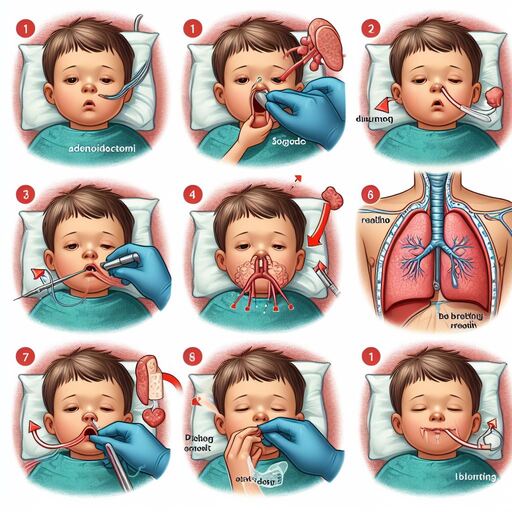Improved Breathing through Adenoidectomy
Improved Breathing through Adenoidectomy
Breathing problems are a common health issue that affects millions of people worldwide. In some cases, the cause of breathing difficulties can be traced back to enlarged adenoids, small glands located in the back of the throat. An adenoidectomy is a surgical procedure that involves removing these glands and can effectively improve breathing.
In this article, we will explore the benefits of adenoidectomy for improving breathing and how it works. We will also discuss who might be a candidate for an adenoidectomy and what to expect after the procedure.
Benefits of Adenoidectomy for Improved Breathing
An enlarged adenoid can obstruct airflow, making it difficult for an individual to breathe through their nose. By removing the adenoids, this obstruction is removed, allowing for improved breathing. In addition, adenoidectomy can also help relieve sinus problems such as recurring sinus infections or nasal polyps.
Who might be a candidate for an Adenoidectomy?
An adenoidectomy may be recommended for individuals who suffer from chronic difficulty breathing due to enlarged adenoids. It may also be recommended for individuals with sinus problems such as recurring sinus infections or nasal polyps. In some cases, the adenoids may be removed for cosmetic reasons, such as when they are causing a person’s nose to appear larger than average.
How does an Adenoidectomy work?
Improved Breathing through Adenoidectomy
An adenoidectomy is typically performed under general anesthesia in a hospital or outpatient surgical center. The procedure usually takes about 30 minutes and involves making an incision in the mouth, lifting the tongue to expose the back of the throat. From there, the surgeon can remove the adenoids using specialized instruments.
After the surgery, patients are typically required to stay in the hospital for a few days while recovering from anesthesia. They will be given pain medication and may be asked to follow a specific diet and activity restrictions during their recovery.
Potential Risks and Complications of Adenoidectomy
Like any surgical procedure, there are potential risks and complications associated with an adenoidectomy. These include bleeding, infection, difficulty swallowing, or damage to the nerves in the throat. However, these risks are generally low, and most patients experience minimal discomfort and a quick recovery after the procedure.
Conclusion
An adenoidectomy is a surgical procedure that can effectively improve breathing for individuals with enlarged adenoids. If you are considering an adenoidectomy, it’s important to speak with a healthcare professional to determine if this procedure is right for you. With proper recovery and post-operative care, most patients experience minimal discomfort and a quick recovery after the procedure.

An enlarged adenoid can also cause problems with the nose, such as nasal congestion, difficulty breathing through the nose, and sinus pressure. These symptoms can be particularly frustrating for individuals who have been suffering from these problems for an extended period of time without finding relief through other means.
In addition to improving breathing, an adenoidectomy can also help reduce sinus pressure and congestion. For many patients, the removal of the adenoids provides significant relief from their symptoms, allowing them to breathe more easily and comfortably.
It’s important to note that not everyone who suffers from enlarged adenoids will need an adenoidectomy. In some cases, other treatments such as medications or nasal sprays may be effective in managing the symptoms. However, for individuals who have tried these treatments without significant relief, an adenoidectomy may be a viable option to consider.
If you are considering an adenoidectomy, it’s important to speak with your healthcare provider about the procedure and what to expect. Your healthcare provider will likely discuss the risks, benefits, and recovery process, as well as answer any questions you may have. They may also recommend additional tests or evaluations to determine if an adenoidectomy is the right option for you.
In addition to surgical procedures like adenoidectomy, there are other options available for managing breathing problems caused by enlarged adenoids. These include medications such as decongestants, nasal sprays, and corticosteroids. It’s important to work closely with your healthcare provider to determine the best course of action for managing your symptoms and improving your quality of life.